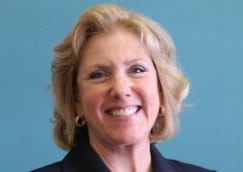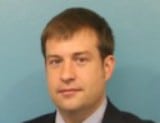Home of the Kul Wicasa Oyate (Low Man), the Lower Brule Sioux Tribe in South Dakota has apporoximately 1,300 members. The reservation is adjacent to the awe-inspiring Missouri River, where the grassy hills are never-ending, and the views of the bison are breathtaking. I am honored to have a second year teaching in this community at Lower Brule Day School.
On Tuesday, August 19, the school hosted a large community gathering to celebrate the new school year. Loads of parents roamed to the high school parking lot to enjoy some smoked links and take the opportunity to speak to their kid’s teachers. I ran into two of my former high school students. One was eager to talk about his preparation for college. He just started his Gates Millennium scholarship application. He is a senior and has goals of going to law school and sitting on the tribal council one day. Another student shared his experience in the GearUp Summer Program. This is his last year being able to participate in GearUp, a college preparation program for Native students. He is also a senior and is on the path to entering college next fall. Hearing about their plans and excitement for college is just a reminder of why I teach.
I am originally from Southern California and moved to the reservation specifically to teach. When people find out what I do and where I live they often ask me with the most perplexed look, and ask, “Why?” This leads to a complex discussion about my family lineage and an overview of Indian Education policy in America. As a person of color, identity is inevitably couched in stories of migration and complicated histories. When I explain why I do this work, I start with my identity and family history. My grandmother, Lupita Chase The Bear, is Kul Wicasa, which is part of the larger Lakota Nation. At an early age she and her siblings were removed from their mother’s home and placed into Indian boarding schools or adopted into non-Indian families. My grandmother was never adopted but spent most of her upbringing in Indian boarding schools in South Dakota and Arizona. Sometime after graduating high school she reconnected with her mother, who at this point was living in Pomona, California. (Can you now understand how my identity is wrapped up in stories of migration and complicated histories?) My grandmother’s journey is not unique, because many elders of the Lakota Nation and most other Indian tribes have similar lived experiences.
Few truly understand the complex realities of Indian people in the United States. One of those realities is the low academic performance and achievement of Native students. A recent study from Education Trust, titled “The State of Education for Native American Students”, reports that Native American students continue to perform significantly lower than White students in reading and math. High school graduation rates, college entrance rates, and college graduations rates are also listed as indicators of achievement gaps when comparing Native American and White students. To avoid simplifying Native American students as just low achievers, the Education Trust report does a good job at recognizing the fact that these students are more likely to attend low-performing schools and less likely to attend schools with Advanced Placement classes. It is important to understand that the achievement gap issue is connected to issues of poverty, racism, or other systemic factors.
The statistics are disheartening, and place a lot of weight on the shoulders of teachers and administrators who work with Native students. Of course there are also victories that must be celebrated. The former students I stumbled upon at the community event on Tuesday, both on their way to college and Gates Millennial Scholars applicants, deserve to be recognized because they work just as hard as any student attending a high performing school. Even with the success they have achieved, there are challenges ahead due to fragile support networks for Native students. The status-quo still remains, and there is much more work to be done because these two students are few among many. I agree with education professionals who work with large populations of Native students that feel that part of the strategy to closing the achievement gap is culturally responsive teaching and curriculum.
Additionally, there has to be honest and empathetic conversations about how my grandmother’s experience and the legacy of Indian boarding schools is directly related to contemporary problems facing Native American students and communities, and a recognition of and a dedicated commitment to guaranteeing all Native American students access to high quality education and career opportunities. I believe I have an obligation as a Lakota to give back to my community, and I am deeply committed to opening and sustaining pathways of opportunities for Native youth.
This past summer I participated in the Policy and Advocacy Organizing Fellowship hosted by Leadership for Educational Equity (LEE). I was placed in the Washington D.C. region and worked with the non-profit organization American Youth Policy Forum (AYPF). It was a great experience to be able to work hands-on with an organization that is dedicated to providing a range of support to vulnerable youth. AYPF is a good example of dedicated people who are committed to pushing out information that is important to creating policy and programs that aim to advance the life opportunities of vulnerable youth, including Native Americans. Federal programs like My Brother’s Keeper and the White House Initiative on Educational Excellence for American Indian/Alaskan Natives are bringing a mainstream spotlight to efforts that advance Native American education. I will continue to do my part both as a teacher and by working in a capacity that promotes systemic change. I encourage readers to do some internet research on tribal communities and learn about ways to get involved. Visit a local reservation or search the tribe’s website. Readers can also visit the White House Initiative on Educational Excellence for American Indian/Alaskan Natives webpage to find a list of organizations dedicated to Native American education.
Samantha Wauls was a 2014 Summer Policy Intern at AYPF






